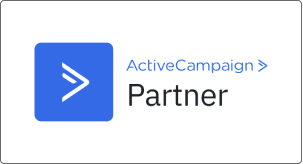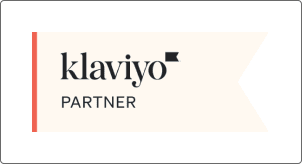Most businesses rely on websites to generate high-quality leads. But what’s the purpose of your online presence if the posted content is unable to convert visitors into leads, resulting in poor conversion rate optimisation (CRO)? This is where A/B testing comes into play! It helps you pinpoint issues in your content so you can address them to attract potential customers more effectively.
Let’s discuss more about A/B testing and its profound impact on the CRO strategies of SaaS businesses!
Understanding A/B Testing and Its Impact on Conversion Rate Optimisation (CRO)
So, what exactly is A/B testing? Typically, A/B testing is a split testing method in which you test two different versions of the same content copy to identify the one that brings the best results. It’s quite a common approach adopted by SaaS companies to improve their CRO for better user engagement and higher revenue. Statistics reveal that almost 58% of companies use A/B testing for conversion rate optimisation, which is huge!
Key A/B Testing Strategies for SaaS Companies in 2024
Here are the strategies that you can follow to implement A/B testing for your SaaS company:
Set Clear Goals
First things first: Start by setting clear and measurable goals. This involves defining what specific actions you want your users to take, whether downloading a source or signing up for a newsletter. Remember, having realistic and clear goals beforehand makes it easy for you to measure success.
Select Testing Components
Next, you should identify the elements of your content that you want to test. These can include CTAs, contact information forms, or the headline. You may also want to check the impact of two different images or colours on your audience.
Formulate Your Hypotheses
Once you have identified the components to test, it is time to formulate hypotheses, which are guesses about how specific changes might affect the conversion rate. For example, you may make a hypothesis that reducing the number of fields or sections in the signup form will boost the form completion rate. This step is highly important as it provides a clear direction for A/B testing and ensures that hypotheses are backed by logical reasoning.
Perform Tests
Segment your audience into two groups before running A/B tests. Create two different versions of the content, but make sure only one element differs in each variation.
For instance, if you are testing the effectiveness of a new headline, keep all other elements constant across the test versions. Now, implement the A/B tests and constantly monitor how users interact with both versions.
Look for any unexpected trend or behaviour that can maximise your CRO efforts. Use data visualisation tools to get exact information about your findings, and go with the version that generates the best results, aka user engagement.
Measuring Success: Metrics and KPIs for A/B Testing in SaaS
Do not forget to keep an eye on these key metrics to monitor the progress of your A/B testing in SaaS:
- Conversion rate: Conversion rate is the measure of the number of users who converted out of the total number of visitors on your site.
- Bounce rate: Typically, bounce rate is defined as the percentage or number of visits to your website that only visited the first page and did not engage further.
- Scroll depth: As the name implies, scroll depth measures how far a visitor has scrolled your web page, providing insights into user engagement.
The Benefits of A/B Testing for Improving SaaS Product Features
Here are some compelling reasons that tell you about the importance of improving your SaaS product features:
- Data-Driven Decision-Making: A/B testing allows SaaS companies to make decisions based on user behaviour rather than assumptions. You get quantitative data on which version of your content performs better based on conversion rates and user engagement. You can then incorporate those findings into your SaaS products so they resonate with user interests and lead to high CRO and lead generation.
- Less Risk: Did you know that implementing changes to a SaaS product without adequate testing can sometimes significantly impact user experience, resulting in a negative reputation? However, A/B testing will address this concern. It allows you to test changes and new features at a small scale first and get an idea of user interaction before the big launch. This reduces the risks of bad user experience and lowers the churn rate.
FAQs
What is A/B testing, and how does it relate to CRO?
A/B testing or split testing is when you can test two different versions of a web copy or product features. It allows you to make data-driven decisions about design changes and feature implementation that result in a high CRO.
How can A/B testing improve conversion rates for SaaS companies?
A/B testing can improve conversion rates for SaaS companies by allowing them to refine their products and onboarding process based on real user data, ensuring a smooth customer experience.
How does A/B testing impact user experience (UX) in SaaS products?
A/B testing positively impacts user experience by empowering businesses to validate functionality and design changes before launching them on a large scale, increasing customer satisfaction.
How can UX services benefit from A/B testing?
UX services greatly benefit from A/B testing, as it provides them with information on how a user interacts with a product. Based on this data, they can then keep, modify, or eliminate different elements for a positive user experience.
How does A/B testing fit into a broader marketing strategy?
A/B testing easily fits into a broader marketing strategy. It allows digital marketers to test different versions of their sale deals, promotions, or ads to identify which version provides the highest ROI.
Conclusion
A/B testing is crucial for SaaS companies to improve their CRO. However, finding the right partner to run A/B tests on your products can be a hassle. But not anymore! 3 Phase Marketing has a testing team that carefully analyses product features and their impact on users so you can provide the best experience to your customers. Contact us today to learn about us and to have engaging and user-friendly solutions!







